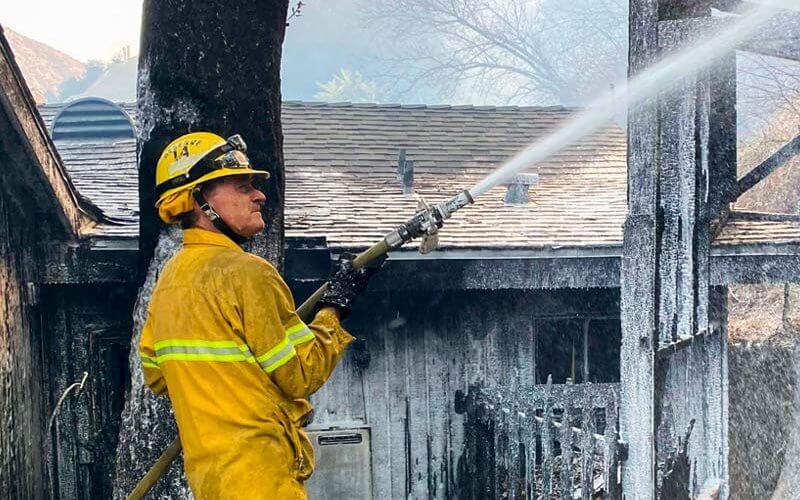
Less than one month after Robert Meeds completed training to become a reserve firefighter, he faced a literal trial by fire when the Silverado Fire ignited close to his own neighborhood.
Around 5 a.m. the morning of Oct. 26, Meeds, a professor of communications at Cal State Fullerton, received a call about a downed power line in his community.
“We went out to deal with that, and almost immediately after we got back, the call came in for a vegetation fire about three and a half miles from us,” he said. “We arrived shortly after the first crew, and quickly hooked up the water supply and started doing hose lays. We worked the fire for about 18 hours that day.”
Fueled by low humidity and Santa Ana winds with gusts up to 80 miles per hour, the Silverado Fire burned more than 13,000 acres and caused the evacuation of 90,000 people from the area, but thankfully there were no fatalities.
Meeds’ path to firefighting began after the Camp Fire ravaged Paradise, California, in 2018. At the time, he lived near a fire station and had occasionally observed the reserve firefighters doing their weekly drills.
With Paradise, though, he noted how that community was much like his own — a narrow canyon with only one way in and one way out. He felt the urge to do something to help protect his community, should it be needed, so he decided to become a reserve firefighter.

After his quick introduction to real-life firefighting with the Silverado Fire, a few weeks later Meeds received a call for what became known as the Bond Fire. This time his own neighborhood was in danger.
“The fire started in a nearby home and we were first on scene for that, hooking up water supplies, doing hose lays, protecting the structures,” explained Meeds. He and his unit worked on that fire for about 20 hours, went home to sleep, and returned to work another 10 hours the next day.
His family and pets had evacuated, but he slept at home to remain near the fire station and to continue to defend his neighborhood.
“In the middle of it, you don’t really have time to think about it being your own community. You’re just trying to do what you’re assigned,” said Meeds. “After it’s all done, you feel like you did something helpful. The community — it’s a small, very close, tight-knit community — really appreciates the fire station.”
And how does Meeds balance firefighting with teaching at CSUF? He is not required to respond to every call, so he can generally work around classes. The Bond and Silverado fires, on the other hand, had widespread power and cell phone outages that affected not only him but some students. His classes had to be canceled, and he worked with students to make up the material later.
“But these two fires were very large and unusual events,” Meeds emphasized. “A lot of students were affected by the outages and evacuations too. In the end, it showed how well Titans work together to be flexible and supportive of each other.”
Read more stories of Titan resilience and achievement at fullerton.edu/resilience.